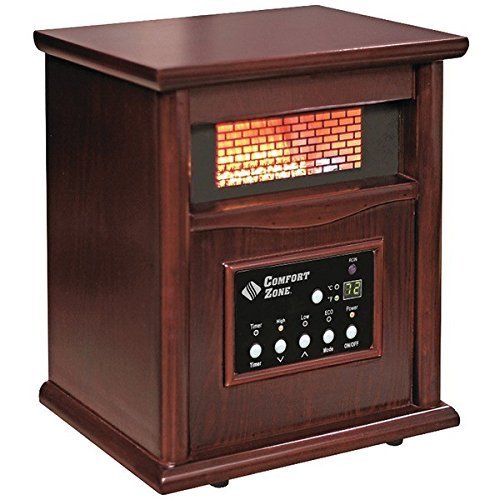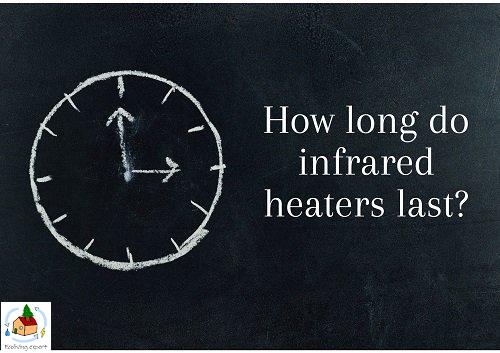Carbon infrared heaters will last for about 10.000 hours. Quartz heaters last between 20.000 and 60.000 hours. Infrared heating panels are the most durable and can last for 100.000 hours.
In this article, I will discuss:
- quartz, carbon, and panel heaters,
- their durability (+warranty),
- maintenance requirements, and
- cost versus life expectancy
At the end of this article, you will find a table with the life expectancy, warranty, and costs of the different types of infrared heaters.
Quartz infrared heaters
A quartz heater is an electric heater that produces infrared (IR) radiation to provide warmth. Quartz heaters are available as indoor space heaters, outdoor patio heaters, or as a heater designed for industrial purposes. Almost all indoor infrared space heaters are quartz heaters.
Quartz heaters will last between 20.000 and 60.000 hours and come with a warranty of 3 years.
Quartz infrared heaters use quartz, a material similar to glass but much more heat resistant. A quartz heater works very similarly to an old-fashioned lightbulb. Except it becomes much hotter (therefore, quartz is used instead of glass) and emits infrared instead of visible light.

Quartz heater maintenance
Quartz heaters normally have a fan to distribute warm air that is created around the hot quartz element inside the heater. This means they will also have an air filter, which needs to be cleaned regularly and sometimes needs to be replaced. A good rule of thumb is to check the filter every month and clean it whenever it seems clogged with dust.
Carbon infrared heaters
A carbon infrared heater works very similarly to a quartz heater, with the exception that it doesn’t use quartz. These heaters use carbon wires instead of quart glass as their heating element. Carbon heaters are more often used for garage or patio heating. Most indoor infrared space heaters you will find are quartz-based heaters.

Infrared heating panels
Infrared heating panels differ significantly from the other two types of infrared heaters. First of all, they are meant to be mounted to the ceiling or a wall so they are not portable like the common quartz space heater. Additionally, these panels are just thin clean panels with no open or moving parts. Infrared panels simply have a large surface that gets to about 170 – 210 degrees Fahrenheit (80 to 100 degrees celsius) and emits wonderful infrared.
Since there are no moving parts, no filters, and no interior that can collect dust, there is basically no maintenance required. On top of that, they are very robust and can easily last 100.000 hours (10 years).
Infrared heating panels can be run 24/7 for 11 years.

Life expectancy, warranty, and costs of infrared heaters
The following table shows the life expectancy, warranty, and average cost of the different types of infrared heaters that are available for indoor space heating. The data is based on common infrared heaters available on the market. The price range is based on several 1500 watts heaters available on amazon (excluding shipping costs).
| Infrared heater type | Life expectancy | Warranty | Price range | Costs per year (based on warranty) |
|---|---|---|---|---|
| Quartz | 20.000 – 60.000 hours (2-7 years) | 3 years | 75 – 140 $ | 25 – 47 $ |
| Carbon | 10.000 hours (1 year) | 1 year | 75 – 220 $ | 75 – 220 $ |
| Heating panel | 100.000 hours (10 years) | 10 years | 600 – 700 $ | 60 – 70 $ |
I included the expected cost per year to more easily compare the costs of the different types of heaters based on their expectancy. The costs are based on their warranty instead of life expectancy since you can be sure your heater will work the time you have a warranty. The life expectancy is often higher and will be an indication of how long you can use the heater when the warranty is expired.
The running costs of infrared heating are based on their energy use and wattage. Most infrared heaters run on electricity and are 1500 watts. If you want to know more about the running costs of infrared heaters, I wrote an entire article on the topic that you can find here: The real running costs of infrared heating (compared to gas).
I did not include the costs for filter replacement in the table above. Filters are only present in quartz infrared space heaters for indoor use. Most filters, however, simply require regular cleaning.


